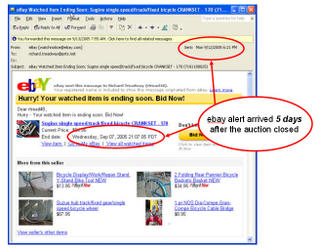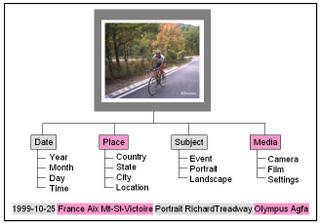
When I first heard of the Cluetrain Manifesto and read Mary Meeker's paper on blogs and Paul Kedrosky's article on syndication I understood the idea that blogs maybe a way to turn the one way web into a two way conversation. Publish-subscribe and syndication offer a loosely coupled dynamic way for corporations to create a conversation with their constituents.
A new communication paradigm. Cool. I'm on it.
I created this blog. I started monitoring blog conversations about our product. I discovered other bloggers with great insights into product requirements. I started subscribing to blogs in bloglines. I created Technorati watchlists. I started tagging with del.icio.us. I moved my photos to flickr and started tagging and blogging them.
It's been almost a year since I started and it was a lot of work. Stepping back to access the net value of all that work I'm coming to the conclusion that we don't have the right tools to make the blogosphere an effective conversation. The amount of work required far exceeds the benefit. Most people I have talked to about the power of blogging simply say they don't have the time to engage. It is clear that there is a lot of value but at this stage of the blogosphere's evolution it's too hard to realize it.
With any new communication paradigm an appropriate etiquette backed by good set of tools needs to emerge before we can really effectively communicate.
Take email for example. Remember those early email messages all in CAPS - why are you shouting? The flame test - would you have said that face to face?
While an etiquette is emerging for the blogosphere, the tools needed to realize an effective conversation have a long way to go.
The reason the tools are lacking, I believe is that we have made the assumption that blog posts are messages and therefore we should operate on them like email. Today's aggregators all look like email readers. The problem in making this assumption is that we have mixed 2 fundamentally different communication types - conversations which are request-response and blogs which are publish-subscribe.
Effective conversations need to adhere to a request-response protocol. I say something you listen, you say something I listen. There are varying cadences dictated but the medium but essentially they remain a serial request followed by a response. Verbal conversations are immediate and prolonged silence will end them.
IM and SMS have a slower cadence and can sustain some latency. In fact IMs asynchrony sometimes breaks the request response protocol. This causes conversations get out of synch and it can be unclear which of the 2 statements you made is the one I'm responding to. Email has an even slower cadence measured in hours and days and snail mail sustains conversations over weeks and months.
Publish-subscribe is a many to many broadcast protocol. I publish, many people listen. In fact as a publisher I don't need to know who is subscribing. If I have something interesting to say I can publish. If you find what I say interesting you can subscribe. This communication has its roots in the written word from cave dwellers hieroglyphs, to books, to newspapers, to websites and now to blogs. Each technology transition from hieroglyphs to blogs has made publishing more immediate, but publishing is inherently not conversational.
In order to converse you have to write back to the publisher and he/she must respond back to you. This is the conversation of the "letters to the editor." What's different from a Newspaper's "letters to the editor" and comments in blogs is that the latency is so low it approaches the cadence of a conversation.
So what kinds of tools do we need to be able to intermix publishing with conversations? It's clear that the tools and interfaces available today are far from adequate to actually enable the promise of a conversational web.
Jeremy Zawodny kicked off a good discussion on the lack of adequate tools with this post.
It's easy to get stuck in old think. Blog posts are messages therefore blog readers should look like email readers.
But blogs are not email and if we are to really deliver on the conversational web we need to start thinking about tools and interfaces that are up to the task.
What we need are tools that integrate tags, comments, posts and subscriptions into a usable interface that enables a conversation to exist within publish-subscribe. A web2.0 style interface with the kind of cross task integration shown in the new email from Zimbra is what I'm looking for.
Hopefully innovation will continue and not be stifled by Microsoft as they did with Outlook.
One thing for certain we have a lot of work to do before a really useful model emerges.
From the desk
Richard Treadway




